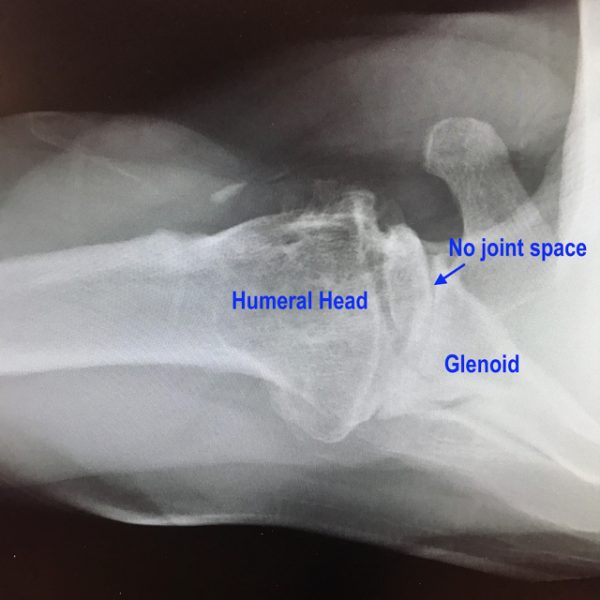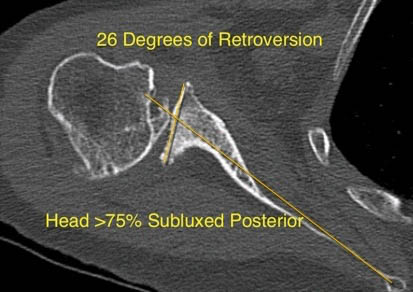Degenerative arthritis of the shoulder affects roughly 4% of the population.
The shoulder with arthritis is often present for many years before it becomes symptomatic. As the arthritis progresses it results in pain, weakness, and loss of motion. For most patients, it is “night pain” that most often compels them to seek medical treatment.

As with arthritis in other joints, conservative measures are recommended as the first line of treatment. These conservative measures include use of anti-inflammatory medications such as Ibuprofen and Celebrex, activity modifications, physical therapy, and injections.
For arthritis of the knee and hip, surgeons typically tell patients to consider replacement when the pain is no longer tolerable and the conservative measures are not providing adequate relief. However, when dealing with arthritis of the shoulder, there are times when patients must make a decision to go ahead with surgery sooner in order to give themselves the best outcome.
The reason that shoulders are different is the limited amount of bone available on the socket side of the joint (glenoid) in which the surgeon places the implant. This available bone is referred to as the glenoid vault (Figure 1 shows a normal shoulder).

As shoulder arthritis progresses this bone can be worn down. This can occur evenly and not result in substantial bone loss (Figure 2).
However, this often occurs in the back and results in what is referred to as retroversion of the glenoid. Thus the glenoid, or socket, is facing more towards the back of the shoulder and the Shoulder Arthritis – When is Surgery Needed humeral head begins to move that direction as well. CT scans demonstrate this better than regular x-rays (Figure 3).

The retroversion must be corrected at the time of surgery in order to not only improve function, but also to have a successful surgery that lasts for many years. It is not uncommon for patients to present for the first time and have retroversion that is too severe to correct. In these cases, the only option is to perform a reverse total shoulder replacement. Follow this link to understand the difference between an Anatomic Shoulder Replacement and a Reverse.
If you have been diagnosed with shoulder arthritis, I recommend that you be evaluated by an expert in total shoulder replacement. They will likely get a good set of orthopaedic X-rays, and if they are concerned about the degree of bone loss, then order a high-resolution CT scan to get the best measurements.
If you would like to make an appointment to see me, please call (719) 822-6277.
Best,
Chris Jones, MD



